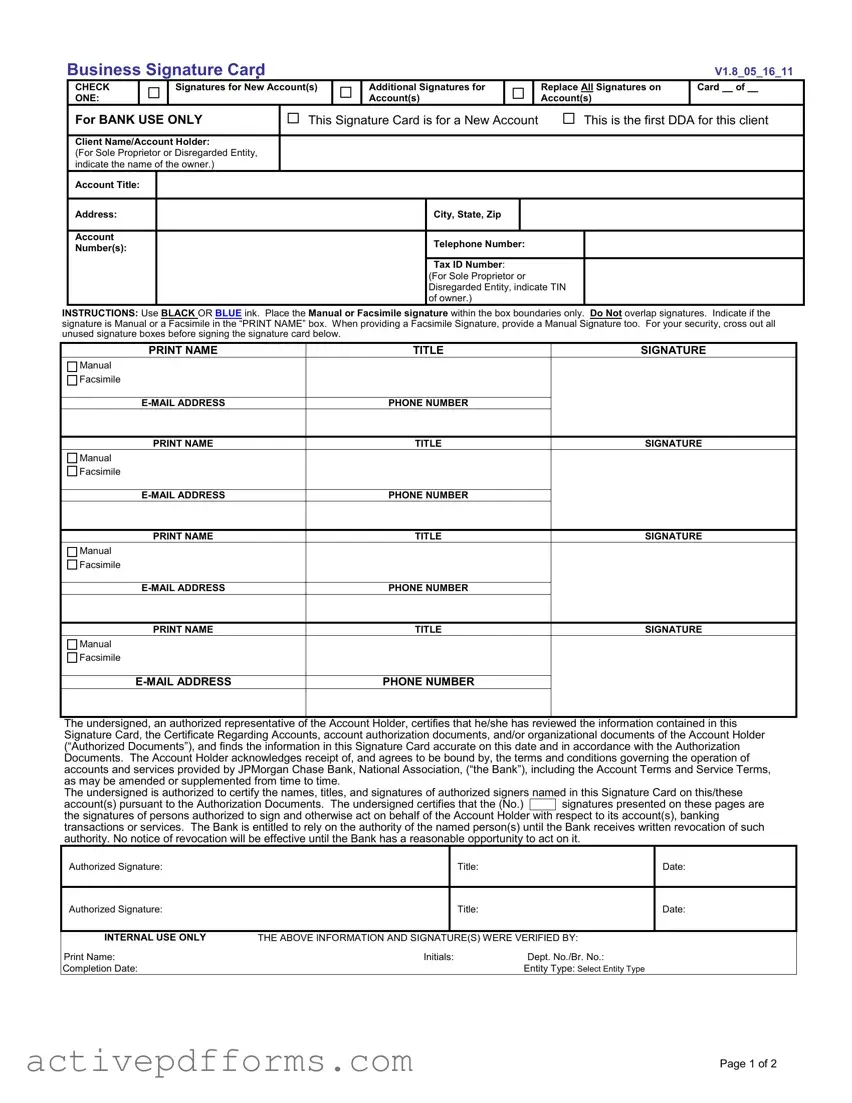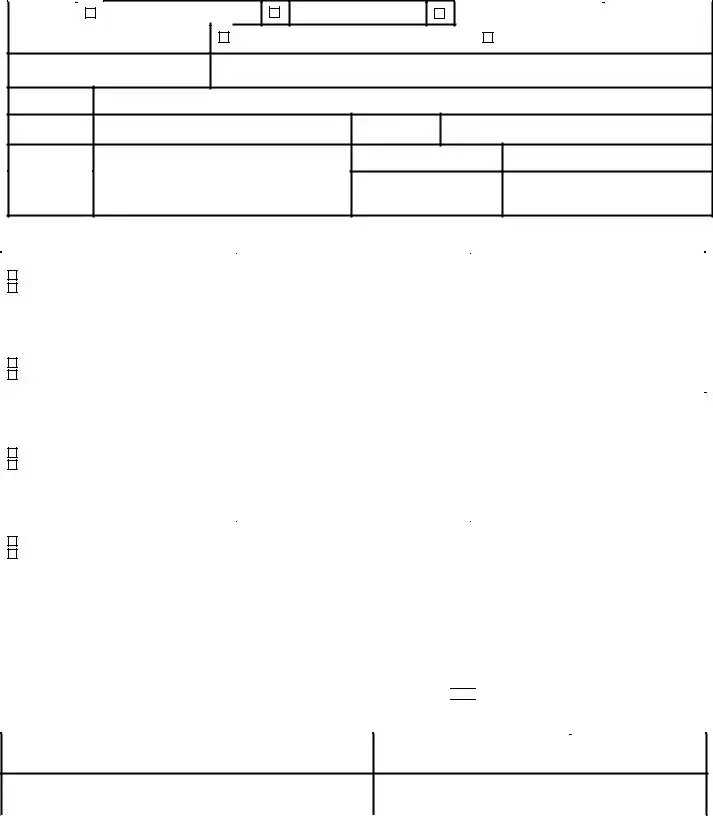When it comes to managing finances for a business, precise documentation and proper authorization hold the key to smooth operations. Among the myriad documents a business must maintain, the Business Signature Card form serves as a cornerstone for authenticating who can access and manage the company's financial accounts. This specialized form is utilized to officially record the signatures of individuals authorized to conduct banking transactions on behalf of the business, making it a critical security measure in financial management. It meticulously details the account information, including the account holder's name, title, contact information, and Tax ID Number, alongside the vital signatures, both manual and facsimile, of authorized representatives. These representatives are verified and endowed with the authority to execute transactions, modify account details, or engage in banking services as per the provided signatures. Moreover, the form facilitates new account openings, updates to existing account signatories, or a complete replacement of all signatures on record, ensuring that the bank's records are always up-to-date with the current authorized personnel. Its importance is underscored by strict requirements, such as the use of black or blue ink and specific instructions for how signatures should be recorded, emphasizing the serious security and regulatory considerations inherent in banking operations for businesses. This form not only assists in safeguarding the business’s assets by officially documenting the authorized signatories but also aligns with legal and regulatory compliance, making it an indispensable tool in the realm of business finance management.



 signatures presented on these pages are the signatures of persons authorized to sign and otherwise act on behalf of the Account Holder with respect to its account(s), banking transactions or services. The Bank is entitled to rely on the authority of the named person(s) until the Bank receives written revocation of such
signatures presented on these pages are the signatures of persons authorized to sign and otherwise act on behalf of the Account Holder with respect to its account(s), banking transactions or services. The Bank is entitled to rely on the authority of the named person(s) until the Bank receives written revocation of such 